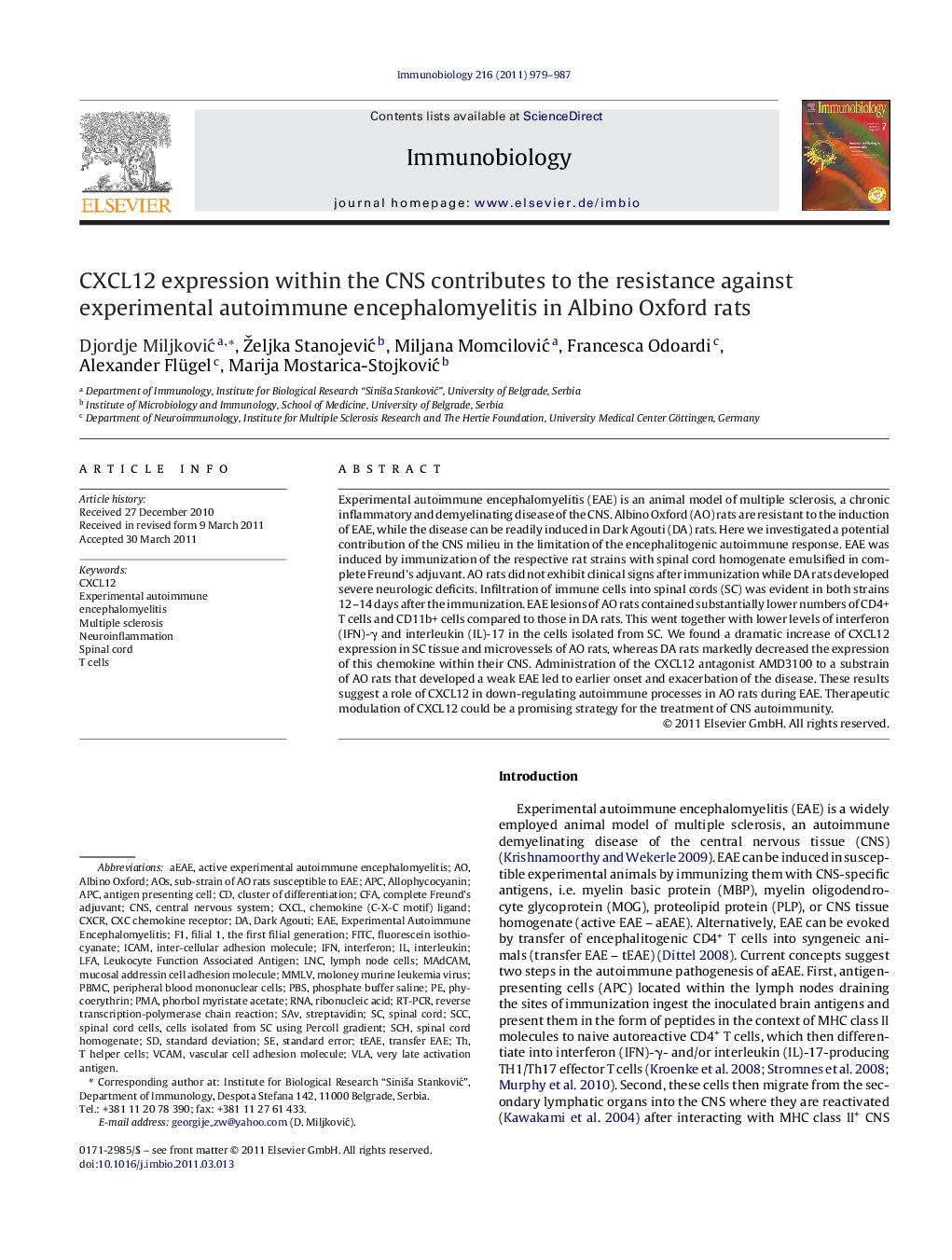| Article ID | Journal | Published Year | Pages | File Type |
|---|---|---|---|---|
| 2183273 | Immunobiology | 2011 | 9 Pages |
Experimental autoimmune encephalomyelitis (EAE) is an animal model of multiple sclerosis, a chronic inflammatory and demyelinating disease of the CNS. Albino Oxford (AO) rats are resistant to the induction of EAE, while the disease can be readily induced in Dark Agouti (DA) rats. Here we investigated a potential contribution of the CNS milieu in the limitation of the encephalitogenic autoimmune response. EAE was induced by immunization of the respective rat strains with spinal cord homogenate emulsified in complete Freund's adjuvant. AO rats did not exhibit clinical signs after immunization while DA rats developed severe neurologic deficits. Infiltration of immune cells into spinal cords (SC) was evident in both strains 12–14 days after the immunization. EAE lesions of AO rats contained substantially lower numbers of CD4+ T cells and CD11b+ cells compared to those in DA rats. This went together with lower levels of interferon (IFN)-γ and interleukin (IL)-17 in the cells isolated from SC. We found a dramatic increase of CXCL12 expression in SC tissue and microvessels of AO rats, whereas DA rats markedly decreased the expression of this chemokine within their CNS. Administration of the CXCL12 antagonist AMD3100 to a substrain of AO rats that developed a weak EAE led to earlier onset and exacerbation of the disease. These results suggest a role of CXCL12 in down-regulating autoimmune processes in AO rats during EAE. Therapeutic modulation of CXCL12 could be a promising strategy for the treatment of CNS autoimmunity.
